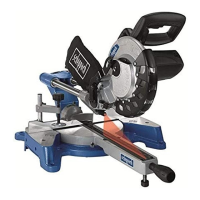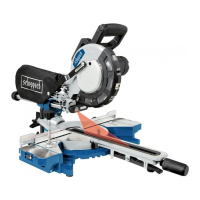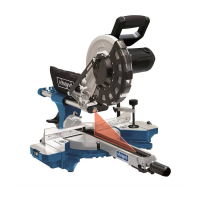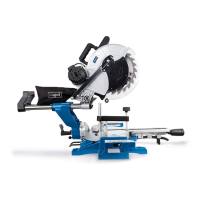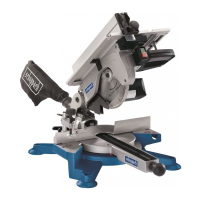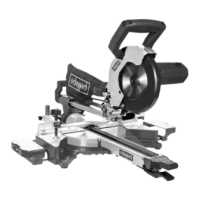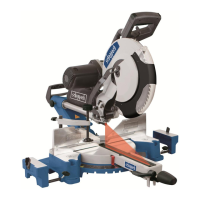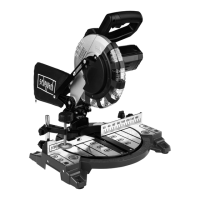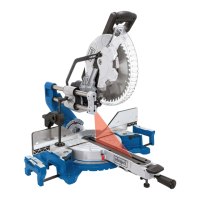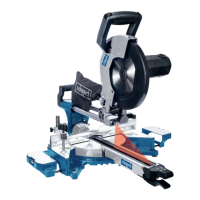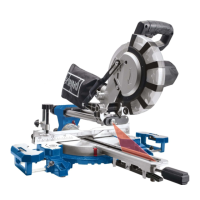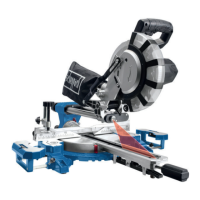28
Störungsabhilfe
Störung Mögliche Ursache Abhilfe
Motor funktioniert nicht
Motor, Kabel oder Stecker defekt, Sicherungen
durchgebrannt
Maschine vom Fachmann überprüfen lassen. Nie
Motor selbst reparieren. Gefahr! Sicherungen
kontrollieren, evtl. auswechseln
Der Motor geht lang-
sam an und erreicht die
Betriebsgeschwin-digkeit
nicht.
Spannung zu niedrig, Wicklungen beschädigt,
Kondensator durchgebrannt
Spannung durch Elektrizitätswerk kontrollieren
lassen. Motor durch einen Fachmann
kontrollieren lassen. Kondensator durch einen
Fachmann auswechseln lassen
Motor macht zu viel Lärm Wicklungen beschädigt, Motor defekt Motor durch einen Fachmann kontrollieren
lassen
Motor erreicht volle
Leistung nicht.
Stromkreise in Netzanlage überlastet (Lampen,
andere Motoren, etc.)
Verwenden Sie keine andere Geräte oder
Motoren auf demselben Stromkreis
Motor überhitzt sich
leicht.
Überlastung des Motors, ungenügende Kühlung
des Motors
Überlastung des Motors beim Schneiden
verhindern, Staub vom Motor entfernen, damit
eine optimale Kühlung des Motors gewährleistet
ist
Verminderte
Schnittleistung beim
Sägen
Sägeblatt zu kein (zu oft geschliffen) Endanschlag der Sägeaggregat neu einstellen
Sägeschnitt ist rau oder
gewellt
Sägeblatt stumpf, Zahnform nicht geeignet für
die Materialdicke
Sägeblatt nachschärfen bzw. geeignetes
Sägeblatt einsetzen
Werkstück reißt aus bzw.
splittert
Schnittdruck zu hoch bzw. Sägeblatt für Einsatz
nicht geeignet
Geeignetes Sägeblatt einsetzen
Trouble shooting
Problem Possible Cause Help
The motor does not run.
Faulty motor, power supply cable or plug.
Burned out fuses.
Have the machine checked by skilled personnel.
Do not try to repair the machine yourselves as it
may be dangerous. Check the fuses and replace
them if necessary.
The motor starts slowly
and does not reach
running speed.
Low power supply voltage. Damaged windings.
Burned out capacitor.
Ask for the Electricity Board to check the voltage
available. Have the machine motor checked by
skilled personnel. Have the capacitor replaced
by skilled personnel.
Excessive motor noise. Damaged windings. Faulty motor. Have the motor checked by skilled personnel.
The motor does not reach
full power.
Overloaded circuit due to lighting, utilities or
other motors.
Do not use other utilities or motors on the circuit
to which the cutting-off machine is connected.
Motor overheats easily Overload of the motor; inadequate cooling of the
motor
Prevent overloading the motor when cutting;
remove dust from the motor to ensure an
optimum cooling of the motor
Decrease in cutting power
when sawing
The saw blade is too small (sharpened too often) Re-adjust the end stop of the saw unit
The saw cut is rough or
wavy
The saw blade is dull; the tooth shape is not
suited to the thickness of the material
Re-sharpen the saw blade or use an appropriate
saw blade
The work piece rips or
splinters
The cutting pressure is excessive or the saw
blade is not suited to the application
Use the correct saw blade
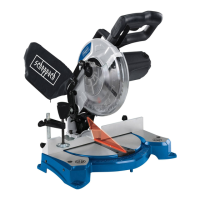
